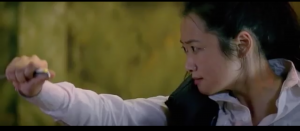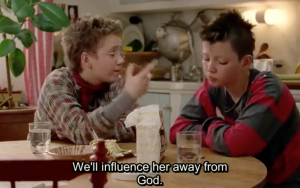In “A Touch of Sin,” violence never seemed so surreally beautiful. In film, there is either gore or beauty, but rarely both at the same time. Through the lens of director, Jia pays tribute to the violent landscape of China. In an NPR review, Jia was described as, “a dramatic and even lurid of writer-director,” somewhat a, “Chinese Tarantino.”
The scene that stood out to me was the theatrical scene of Xiao Yu’s escape from the parlor. After the brutal and repetitive beating (much like the beatings of the horses), Yu saves herself by murdering her attacker, and walking out into the street. This scene is by far one of the more theatrical, combining visual beauty with martial arts-like choreography. Viewing this sort of theatrical violence through the lens of a Chinese native brings about a knowing distortion. In contradiction to Katherine Boo’s western lens of near romantic and almost pornographic depiction of violence and hardship in the town of Annawadi, this film creates a surreal and fictitious undertone to violence. Katherine Boo’s novel depicts violence and poverty in a sort of UN, NGO type of way that strengthens “otherness” and colonialist orientalism. Since Jia is a Chinese native, he is able to escape from the realism of violence, and enter a realm of artistic distortion. Much like Tarantino treats American violence, as a sort of underlying pervasive but non-representative of a whole nation-state, Jia does the same.
We Are The Best! was such a great film. It made me really nostalgic for that type of adolescent friendship where at one moment a group is hugging, playing with hair and the next hitting each other and manically giggling. While the film focused on the universal theme of friendship and adolescent social dynamics, it was uniquely Swedish, weaving the inexorable physical landscape and general social culture.
I chose the still above because it made me laugh. The punk scene is notorious for pulling the “good kids” into the dark side. This was exactly the type of thing conservative parents think punk kids are conspiring about. This still also marks the origin story of the band’s formation-getting the good Christian girl to cut her hair, getting drunk by proxy, and beg for an electric guitar on the street. Having a Swedish director within a Swedish landscape made the scenery blend with the culture. Sweden wasn’t used as some Hollywood green-screen as a substitute for plot-it was merely a location for these girls to be represented with authenticity.

